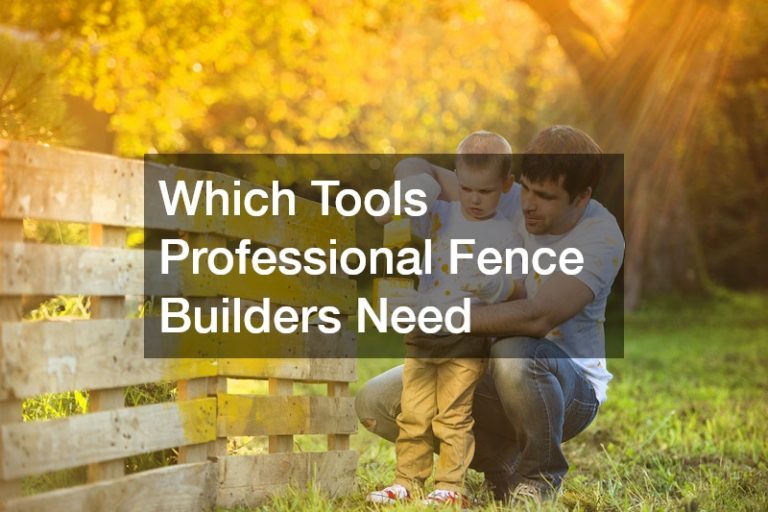Are you a hospitality industry enthusiast who dreams of opening a restaurant in your locality? Though the past two years have witnessed the closure of eating facilities, especially due to the COVID-19 pandemic, the industry is returning. You’re in a good place to benefit by opening your restaurant. Here are useful tips that you can use as part of starting a restaurant checklist.
1. Build An Online Presence
As a restaurant owner, your online customers can make much of your business revenues. Sometimes, people want a good meal without leaving the comfort of their offices or homes. Your business stands to benefit significantly from a well-constructed new website. Today’s food business has gone online, with many people prefer ordering meals and having them dropped to their homes or offices.
As part of starting a restaurant checklist, hire a website expert to construct a one-page website. It will enable those searching for a restaurant online to find your restaurant quickly with one click. Your website must use stunning images that can increase the conversation rates of online visitors to actual buyers.
It should include your restaurant’s location and contact details. You can incorporate a chatbot to engage customers personally. The restaurant menu should be displayed prominently on the website. People will visit your website first to view it, and then they can decide whether to order or not.
The power of any website is using professionally snapped images, which are well-edited for clarity. The customers want to see what to expect in their meal plate. Articulate every detail about the kind of meals on offer. The details should include descriptions of ingredients and pricing on your website.
That will help those with allergies and other special needs before they can make the orders. When the website goes live, you can start using marketing tools to analyze visitors to your website and offer solutions tailored to their needs. Your business website should be easy to navigate and generally free to use when making online orders.
2. Cleaning Services

Cleanliness is very crucial for a restaurant business. While running the business or, cooking, serving customers, and handling other daily operations, you may not be able to give your restaurant the best in terms of cleanliness. Plan on hiring a company that offers professional kitchen cleaning services. Such professionals will provide regular cleaning services daily or every other day.
This way, you save valuable time to focus on other tasks. Look for a cleaning company that offers specialty cleaning services for complex cleaning jobs such as deep cleaning of the kitchen and the facilities. This should be part of your starting a restaurant checklist because, as professionals, they will come with the tools, equipment, and cleaning chemicals to clean off the stains, grease, and oils easily and quickly. The company will also handle the cleanliness of the restrooms and sitting areas for customers who dine in the restaurant.
Other tasks include cleaning windows and mirrors, kitchen equipment, and mopping floors. A clean, fresh-smelling restaurant will create a positive image of your business, bringing repeat diners and, in turn, more company. A commercial cleaning service will remove the stress of keeping your restaurant business working.
3. Equipment
Your restaurant needs equipment, big or small, to ensure the smooth running of the daily operations. So, when starting a restaurant checklist, make a budget for them. You can either lease or buy everything. You may also opt to lease some and purchase others.
A kitchen must use knives for food preparation. A dull blade can slow your work, leading to downtime and delayed food preparation. Look for a local knife exchange program that can offer knife sharpening services occasionally. Working with professional sharpeners helps eliminate the risks of a person with no experience attempting to handle the blades.
Employees are motivated when they have high-quality tools to do their work with. With sharp knives, you’ll cut down on food wastage, and the knives can help make food portions look more pleasing. Shopping for the right restaurant equipment requires a mix of skills in choosing high-quality, leasable equipment and items you’d prefer to buy.
Write down your list of nice-to-have items and another of must-have items. Decide whether you want to lease the oversized kitchen items such as ovens and cookers. Will you buy the kitchenware, such as knives, chopping boards, and cutlery? Do not leave your chef out when shopping for these tools and equipment.
Their expertise and professional experience will help determine what you need immediately and which can wait. Go through mock scenarios with your chef, such as lunch hour when customers will likely come in their numbers. Then, make another simulated scenario of a busy dinner service. These scenarios give you an idea of what is needed and what amounts. Your kitchen tools and types of equipment list likely won’t be exhaustive, so expect to keep adding to this list when the business starts.
4. Security

Your restaurant’s security needs are vital to protecting customers’ and workers’ health and safety. When security is assured, your customers can enjoy their time at your restaurant without worrying. Security measures here apply to both within your business and protecting your clients.
Many theft cases happen quietly, such as stealing goods, money, beverages, and food from the kitchen. Disgruntled workers usually plan these inside jobs. Note down a robust security system as part of starting a restaurant checklist. Your insurer will investigate your premises’ security installations before they can agree to pay out any claims.
Crimes involving drunken patrons can get out of hand. Ensure your staff, including bar attendants, are well-informed and versed in handling alcohol responsibly. It is illegal to serve drunk customers with alcohol. Check with your state on the applicable regulations to protect your customers and your business.
Install control systems in some parts of your restaurant to limit access to only those who must work in those areas. The storage area, offices, back office, and side entrances should not be accessible to everybody, as this will expose your business to theft and incidents such as fraud.
Consider the access needs that your business should have. For instance, if you plan on having a parking lot security tower, set aside a budget for the staff operating it. Also, consider the number of entry points you want and plan accordingly. Your business is expected to be handling money from customers.
Plan how the funds will be transferred from your business premises to the bank. Your staff should also learn how to keep money safe. You can’t rule out rogue customers who could rob your team when they notice a security breach. Adopting non-cash modes of receiving payments will eliminate having to handle wads of cash and lower the security risks.
5. Premises
Restaurant businesses thrive better in urban areas or busy streets. When searching for a location to start your restaurant, consider including the following on your starting a restaurant checklist. First, do your due diligence on the recurring costs you must pay when acquiring a business premises. Other than the rent or mortgage, if you are buying the property, find out the cost of business insurance.
You must note down the business rates charged for your kind of business and factor in the energy and utility bills. Ensure that you seek professional help from licensed realtors to receive top-notch advice on issues such as estate agent fees and the best mortgage lenders to approach. Factor in the maintenance and cleaning of the premises, the service charges you will pay for communal areas, and the moving costs. Fitting out the space and equipping it to suit a restaurant is also a significant cost that you need to consider.
6. Fit Out
Your restaurant’s reputation for its food safety will start at fit-out. You want your business to be known as a clean, easy-to-access and maintained place. Consult with the retail tradespeople to give you options on the commercial walls that suit such a business. They will also recommend the equipment and space setup that will suit your needs.
When starting a restaurant checklist, ensure enough space for all equipment and appliances, such as refrigerators, ovens, and storage areas. Include basics such as running water, waste disposal system, lighting, and ventilation for workers and customers. Fit-outs need to be installed in such a way that your premises meet health and safety standards.
Your storage areas should have pest control features. The place should be easy to clean as this is a requirement of the food safety organizations, so consider these factors. The number of sinks, lockers, and facilities for your staff will be part of your fit-out requirements. Consider the seating, lighting, flooring, and waiting areas for your customers.
A new restaurant fit-out will need ovens, stoves, and chilled storage areas such as refrigerators and cold and cool store rooms. Consider putting up frozen storage depending on the size of your business. Other essential parts are grills, hot food storage, racks and cupboards, pots and pans, utensils, crockery, and food passes.
7. Restaurant Doors

Your restaurant’s access is the first impression your customers get, and that’s where they develop their first opinions. Plan to install impressive commercial glass doors to give a lasting impression to customers. All entries, including the kitchen traffic doors, exit doors, freezer doors, and exterior doors, are vital and must be in your starting a restaurant checklist.
Consult with door manufacturers in your locality. It would help if you worked with a manufacturer who can create custom-made doors. These will be ideal as the manufacturer will work with your specifications. Remember the restrooms while designing the partitions.
The bathroom partitions ensure privacy for each user while still providing functionality in a public restroom facility. Put some thought into the material you choose for your restaurant restroom partitions. Consider your needs as a new business.
Consider factors such as durability, aesthetics, ease of service and maintenance, and budget. The material for commercial bathroom partitions should be a well-considered decision based on your needs. By understanding the characteristics of different types of restroom partitions, architects, designers, and facility managers can create bathroom spaces that are not only functional but also visually appealing and long-lasting.
8. Support Services
You’ll need a reliable support service provider for your restaurant’s appliances, such as ovens, refrigerators, and cookers. Find out from within your locality professional technicians trained and experienced in Viking appliance repair. They should be licensed to handle high-end appliances and fully insured. Include a budget for regular repair and service in your starting a restaurant checklist. An expert technician will advise whether your appliances need servicing, repairs, or replacement.
9. Glazing

Your restaurant deserves a beautiful outlook. Depending on the functional uses of your restaurant, you can expect that there will be daily footfall for your business. You can use a curtain wall or a commercial storefront framing for your restaurant.
If you choose the storefront glass, you can use it on your entrance. It’s made of large, laminated, or tempered single-pane glass. It’s held in place using aluminum frames or structural silicone sealants. Include these as part of your starting a restaurant checklist.
The glass panels will let natural light into your business premises, and customers can enjoy maximum visibility inside the restaurant. They’ll give your restaurant an inviting, welcoming atmosphere that customers will appreciate. The robust features offer security, which will deter burglars from your business. You may customize the door with additional locks and other security features.
10. Plumbing
Your restaurant’s plumbing system must be hooked to the appropriate appliances for efficient working. It must also adhere to the legal requirements when installing new fixtures. Tasks such as sink replacement service, drainage installation and cleaning, water heater repair, and other services should be left to the professionals. They should, therefore, form part of your starting a restaurant checklist.
Ensure you get maintenance and servicing done to different plumbing parts, including the toilet, kitchen, sinks, and other crucial components. Ensure you work with a technician who understands the plumbing system and has worked within commercial establishments. Always keep your plumber’s contact information in your phone book so that when you need help, you can call them.
The restaurant business is back nationally after coming out of the shadows of the COVID-19 pandemic. People want to dine out or order meals online. Starting any business means spending time, money, and resources to get it off. However, the profits will be worth the hard work.




